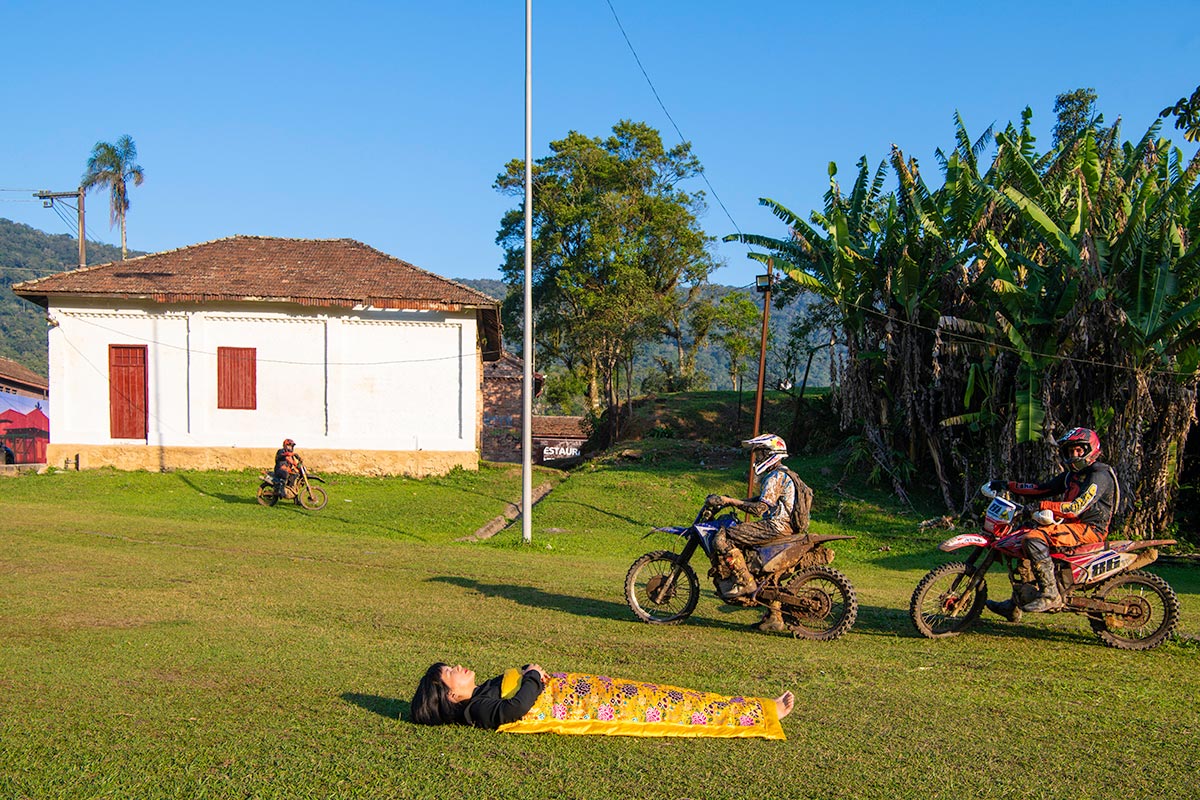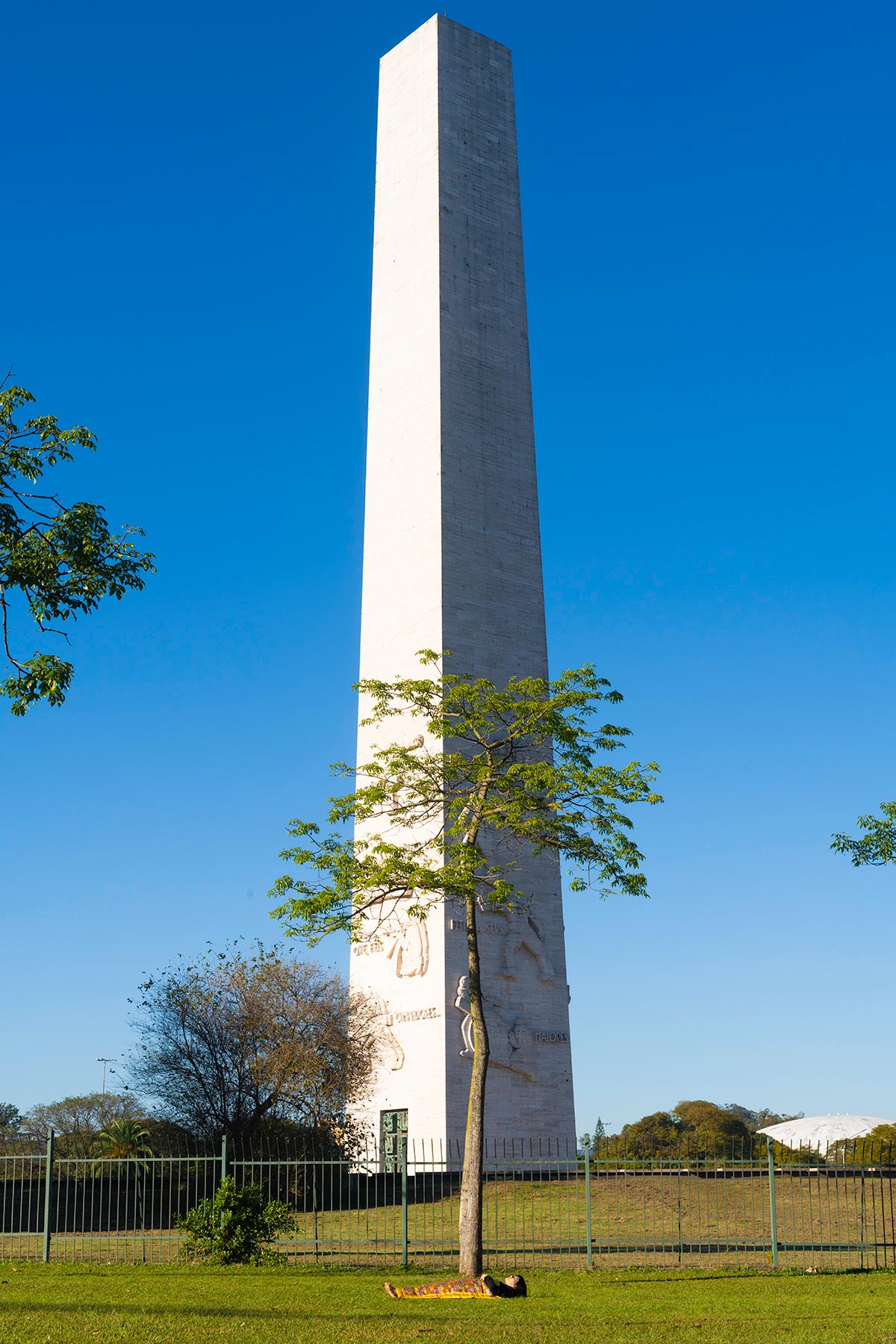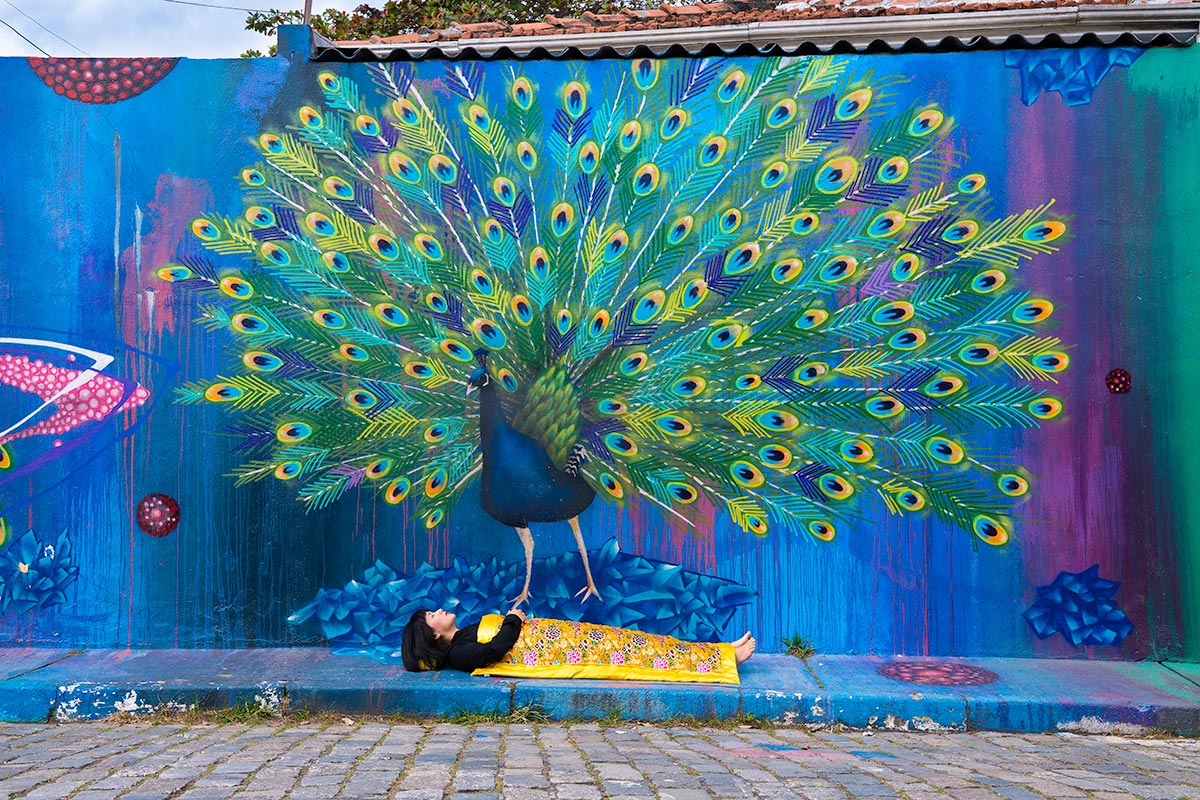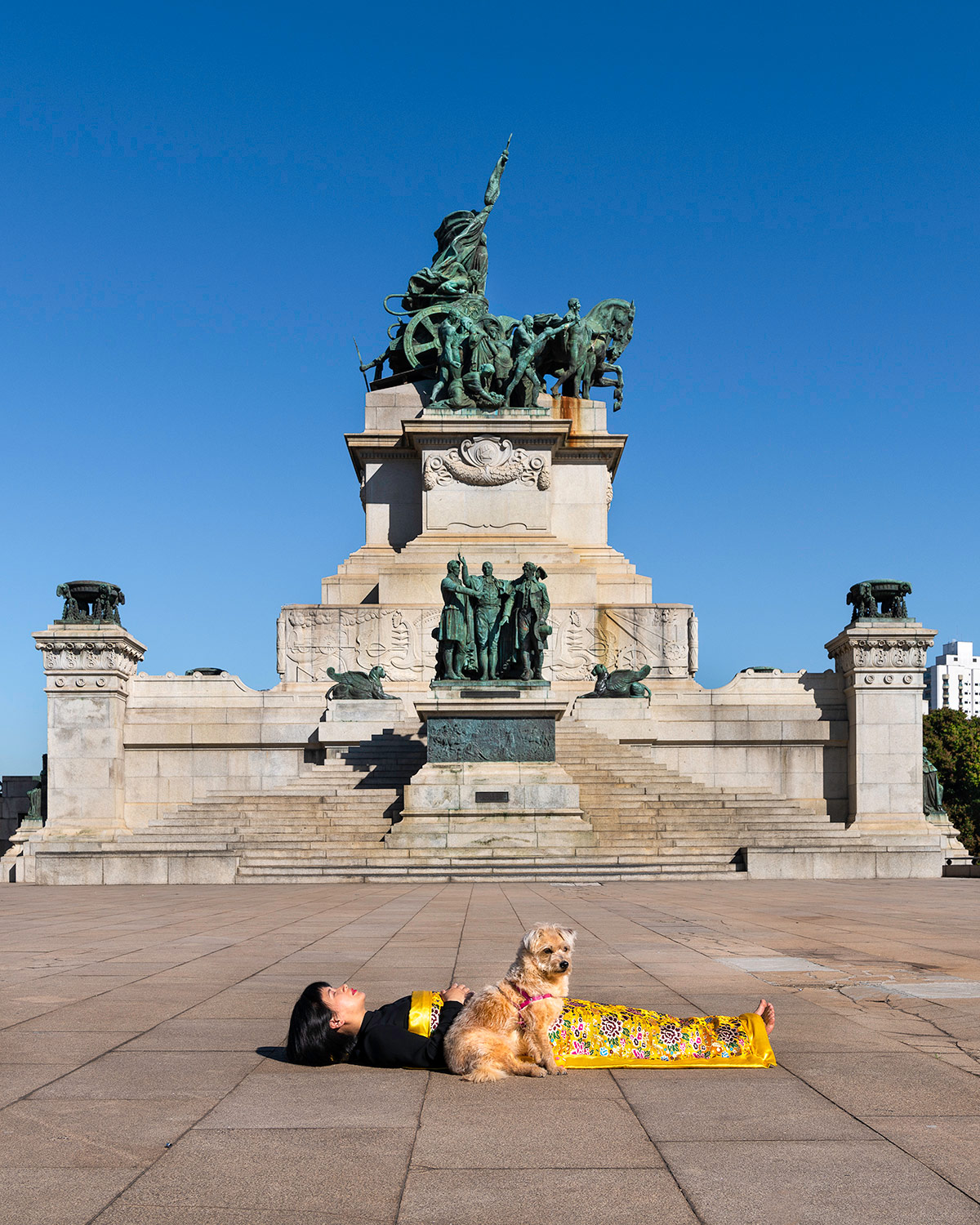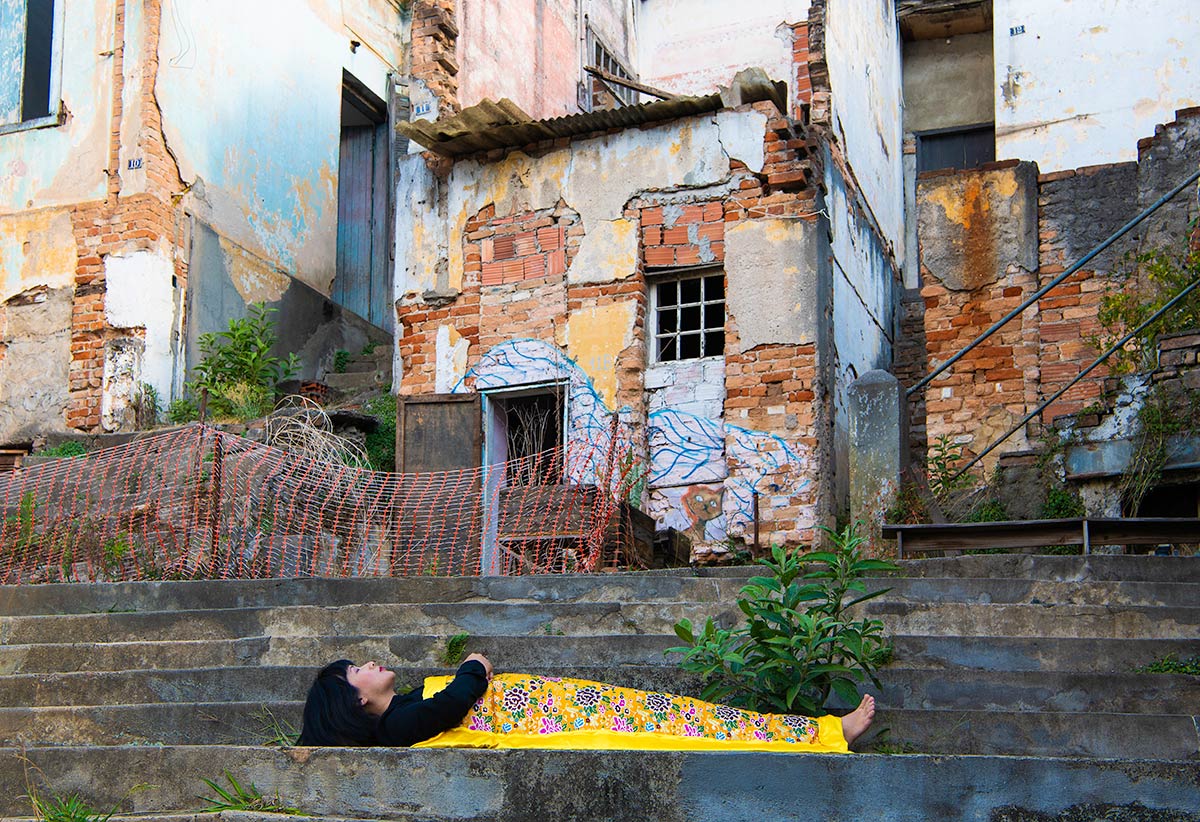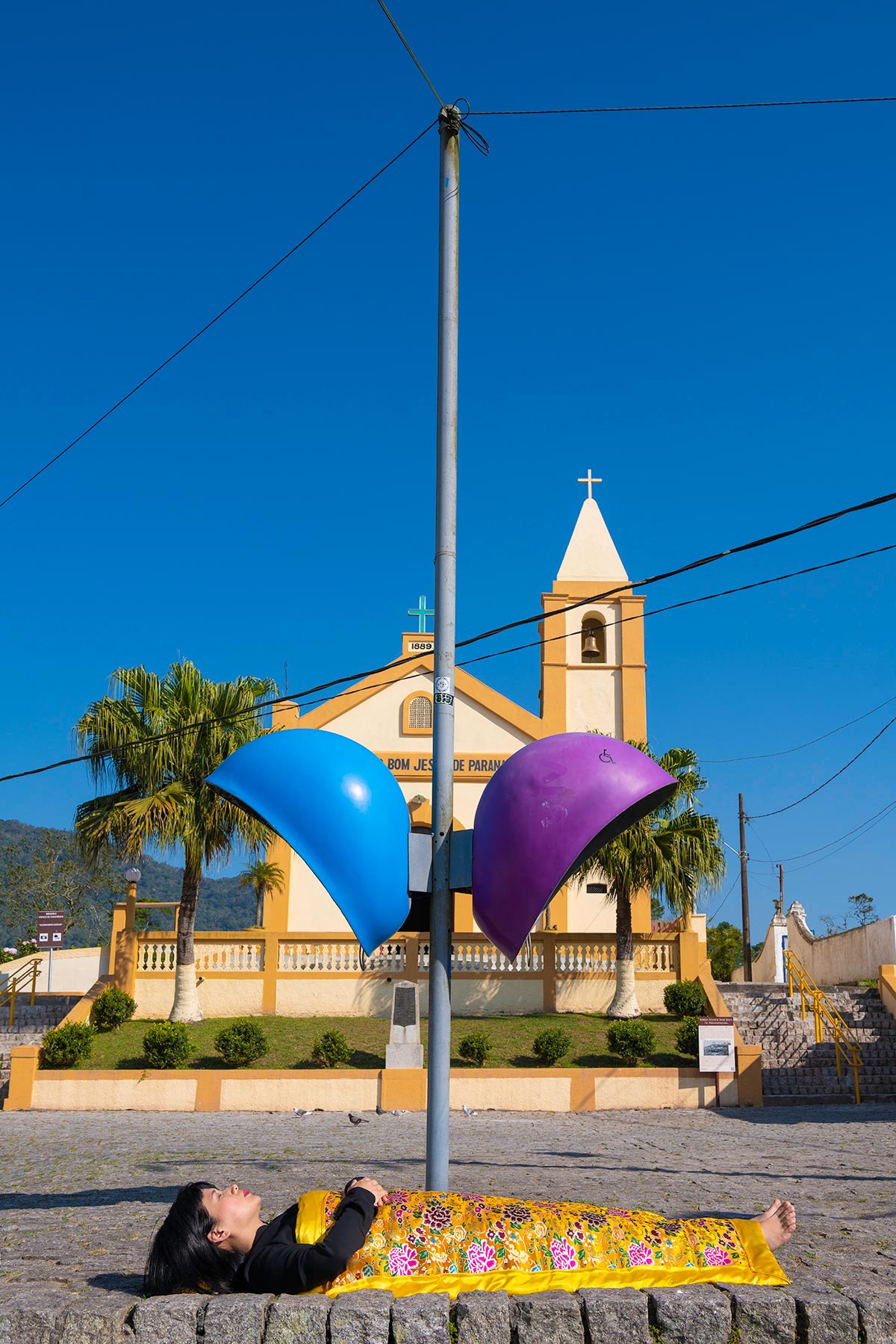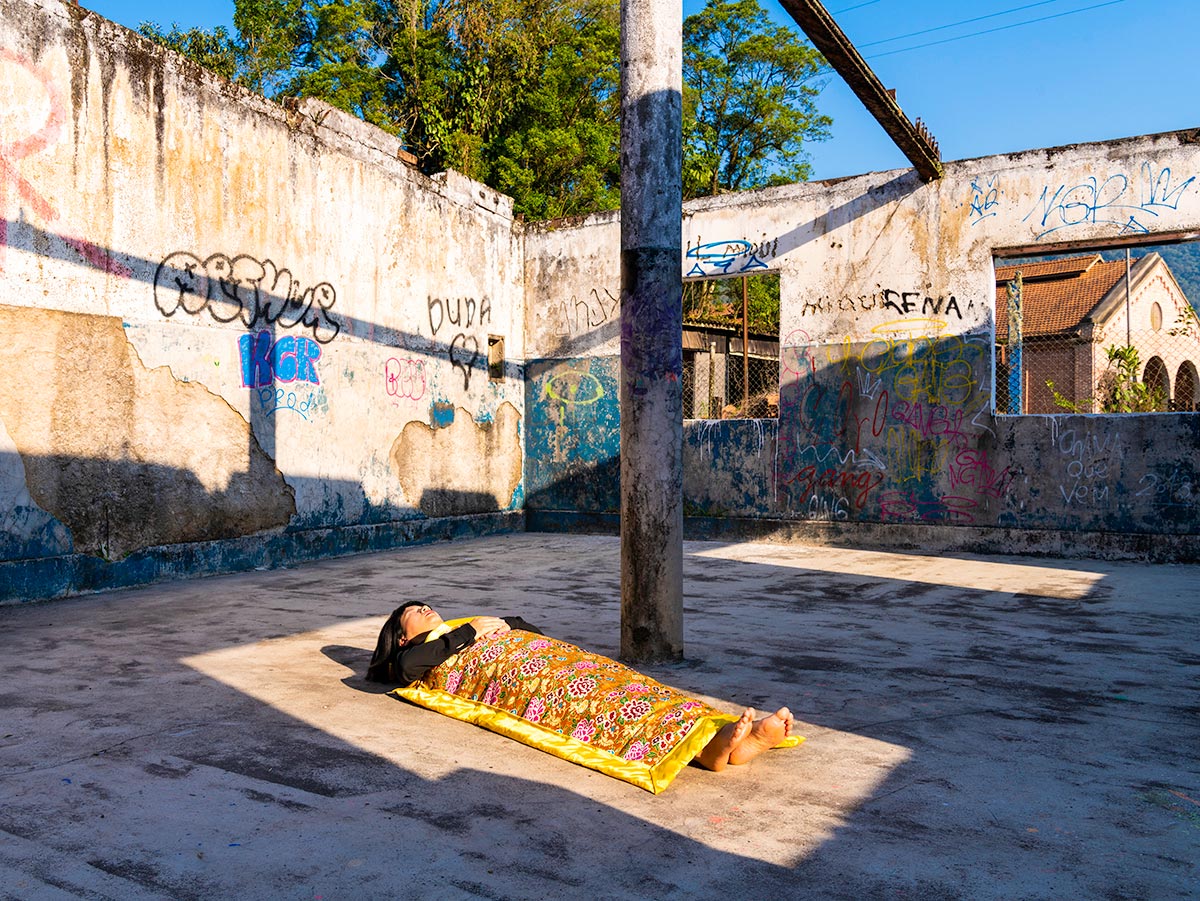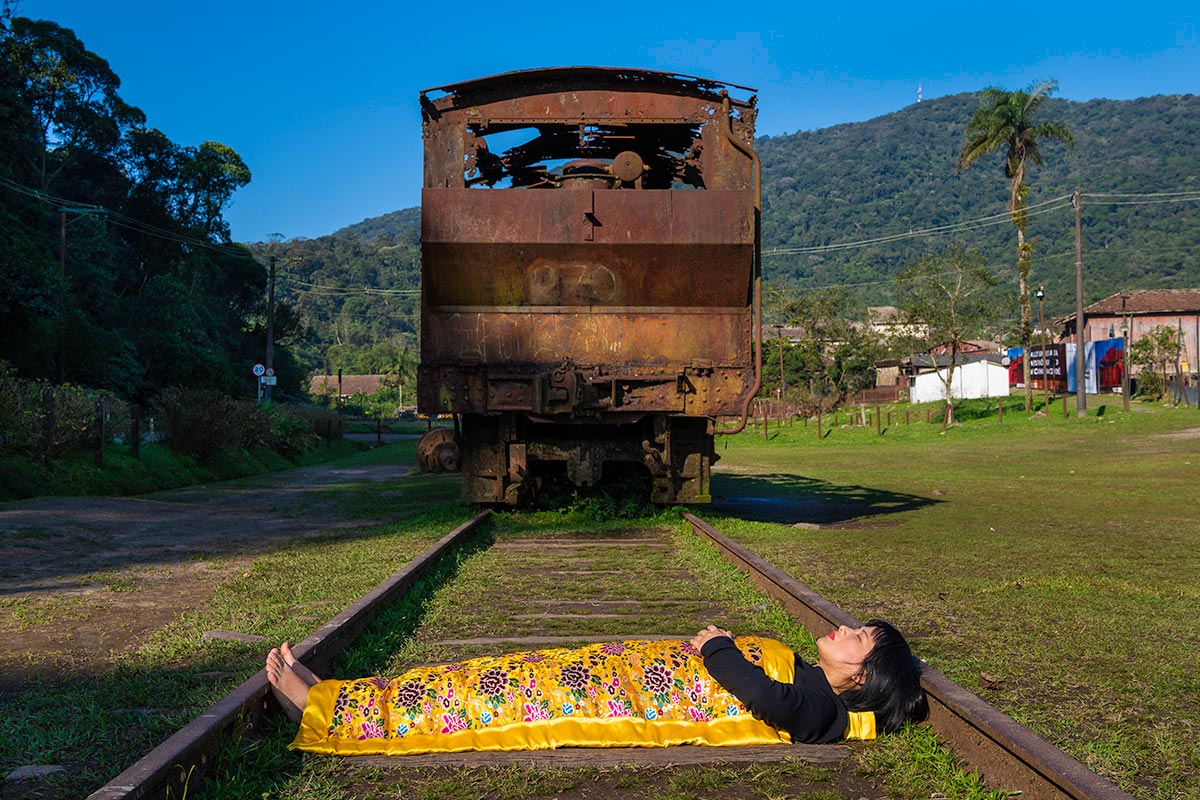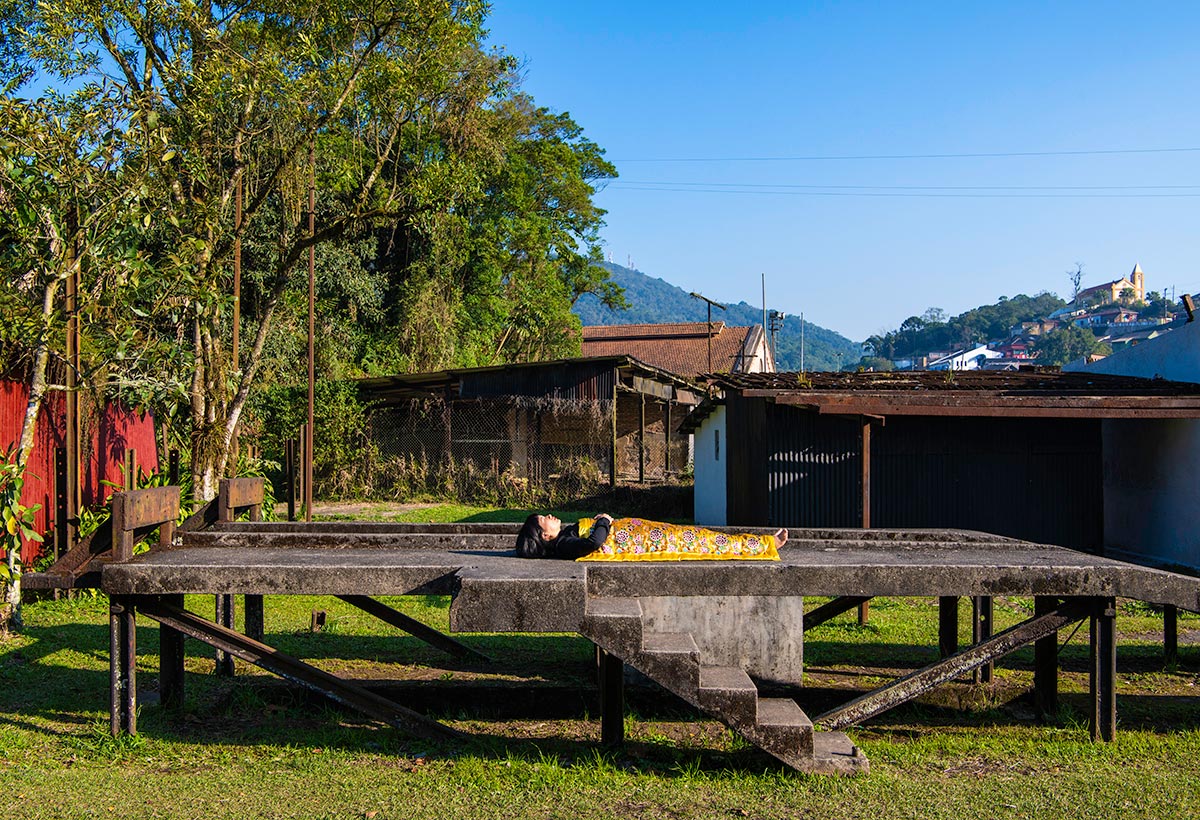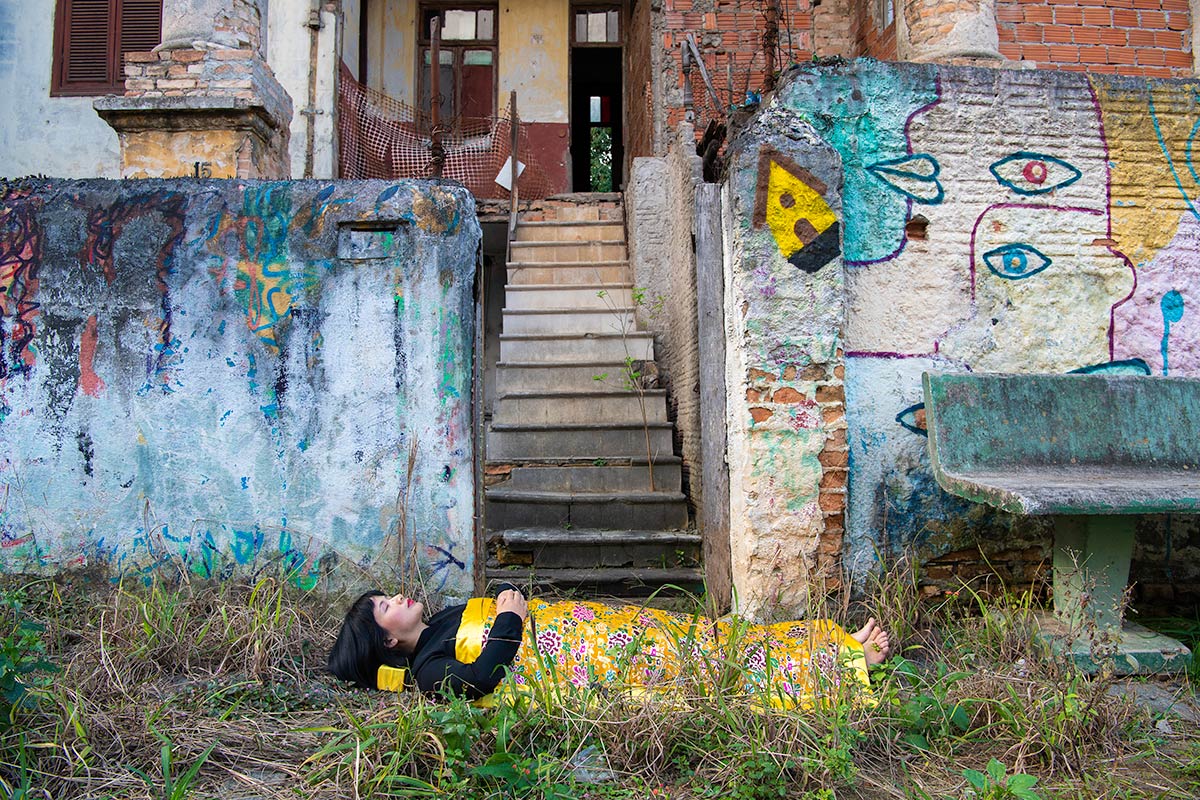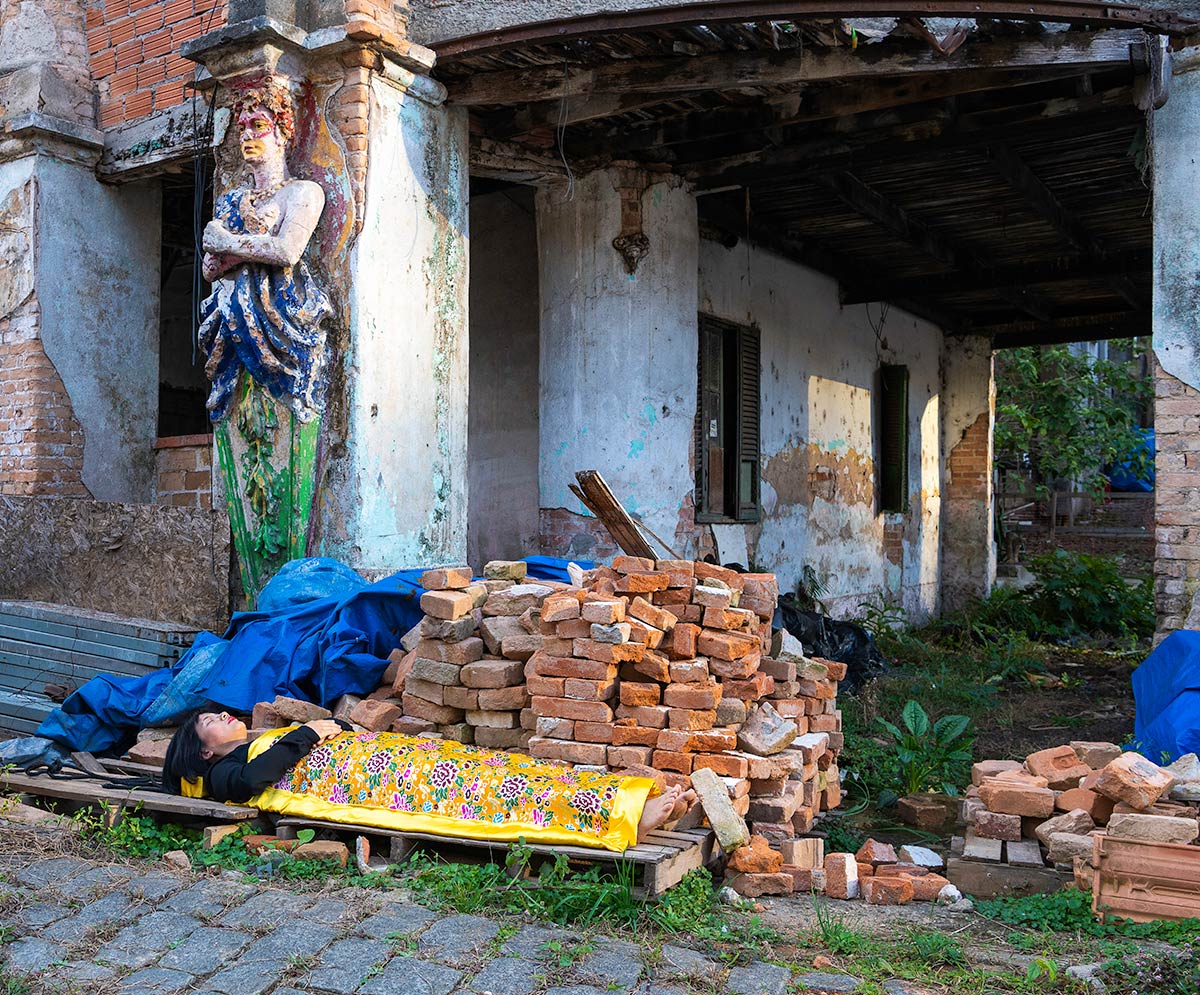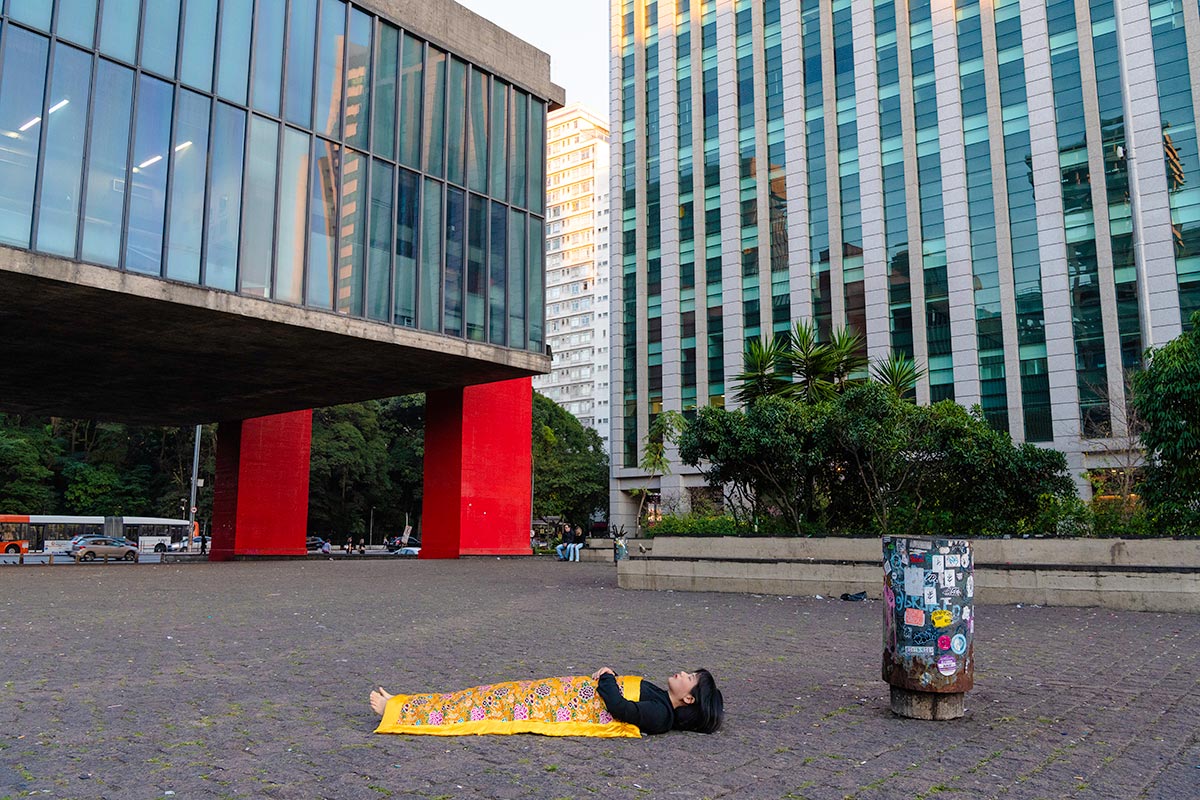I Have Been There is an on-going public intervention performance that explores belonging, diaspora, and existence in public spaces. Each time I travel to a new place, I make a new duvet with Chinese traditional embroidered silk fabric. Covered by the duvet, I lie on ground of historical sites, landmarks, tourist attractions, and other significant places or events as a sign of negotiating and/or engaging with cultures and spaces.
This project is inspired by a funeral tradition in my hometown in China. When an elder person dies, daughters of this elder make shrouds with silk fabrics to cover their deceased parent’s body. If this elder has six daughters, this elder’s body will be covered by six different shrouds, layer by layer. For me, as a person living abroad alone without family and children, the question of who will bury me after I die sometimes bothers me. Therefore, I make my own shrouds and bury myself publicly and repeatedly wherever I travel to simultaneously celebrate death and my own existence.
The body is political, and my body is my monument. Although this project was inspired by Chinese funeral tradition, the major trigger to make this project was the global migrant crisis and the increasing border control and anti-immigrant policies in the West that started around 2016. As a person who is part of this community but has the privilege to enter most countries freely, I feel deeply responsible to make something to respond to this issue. Through creating a series of socio-spatial interventions in public spaces, I present body as an embodiment of dynamic human relations that transgresses and challenges social structures and status quo. This work also opens conversations about how to turn public spaces to a playground, a stage, or an instrument for unsanctioned artworks, activist interventions and political actions, providing an alternative perspective for rethinking performative intervention in relation to the field of creative cultural activism and social change.
This project often brings me into a liminal space. A space where I am not necessarily formally excluded, but not welcome neither. Especially when I am in a place highly controlled or politicalized, my intervention becomes risky. I have been arrested, forced to delete my photo documentations, stopped and questioned by police and security guards many times. And thus, this performance becomes a tool to test out freedom and democracy of spaces.
I started this performance in 2015. I have performed in Athens, Istanbul, Beijing, Hangzhou, Tokyo, Kyoto, Seoul, Sao Paulo, Rio de Janeiro, Buenos Aires, Colonia, London, Manchester, Paris, Santiago, Mexico City, Manizales, Toronto, Vancouver, Quebec City, Boston, Houston, Los Angles, Chicago, Miami, and so on. And I intend to continue doing this performance until I cannot travel anymore.
Photo credit: Marcelo Schellini

